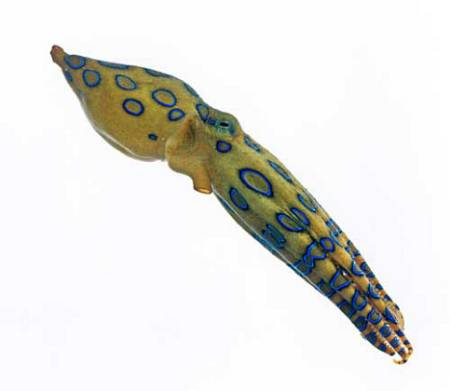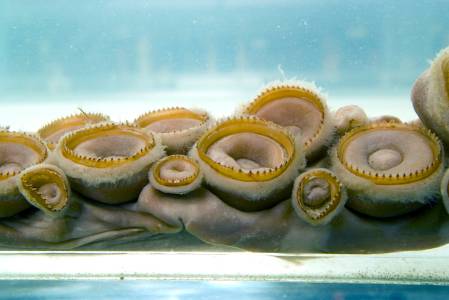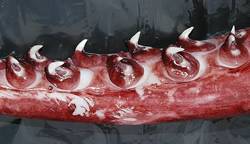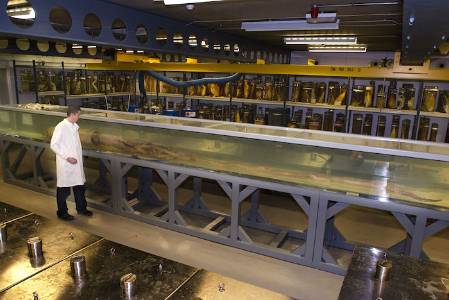Intelligent, colour-changing, deep-water creatures that possess a beak as well as thousands of 'mini claws' and suckers on each tentacle... Not to mention different species going by the names of Giant and Colossal Squids... Cephalopods certainly made for interesting viewing in a specimen-packed Nature Live here in the Attenborough studio. Dr Jon Ablett showed us around these fascinating creatures one tentacle at a time in this aptly named 'Tentacle Tales' Nature Live.
As the audience strolled into the studio there were some dazzled-looking faces before the event had even started, due to the sheer array of pickled creatures and cephalopod limbs on display. However, when the lights dimmed all attention turned to Jon as he kicked off the event by describing the colour changing capabilities of cephalopods.
He explained that the biology behind cephalopod colour changing is far more advanced than that of the chameleon, the reptile often thought of as the master of colour change (e.g. we often say 'they demonstrated a chameleon-like ability to adapt to their surroundings'). Chameleons use differing levels of hormones in their blood stream to trigger their colour change. However, using the blood stream to achieve this means that the speed of the change is limited by the rate of blood flow around the body.
The blue ringed octopus which uses its nervous system to trigger skin colour changes.
Cephalopods, on the other hand, trigger their colour changes via their nervous system, which is a far more rapid method of transmitting signals across the body. At this point a video showed exactly how music with a heavy baseline can trigger a cephalopod skin sample to change colour to the beat, as the nerve endings are stimulated.
Following on from this, Jon drew the audience's attention to what it was in the large jars in front of them. In these jars were the remains of squid arms and tentacles. When these specimens were removed it was clear exactly what the difference between a cephalopod arm and tentacle actually is. Cephalopod arms have suckers down their entire length, while the tentacles only have suckers at their tip.
Sharp ring-lined suckers found on the arms (n.b. not tentacles) of some cephalopods.
The range of different types of suckers that cephalopods possess was highlighted through these specimens. It was clear that some cephalopods have arms covered with many round suckers that are also lined with sharp teeth like projections. Others, such as the colossal squid (Mesonychoteuthis hamiltoni) have even more vicious looking ones, each wielding a single large claw projection rising out from their centre that can also rotated.
Having these impressive adaptations allows the cephalopods to not only grab onto but also hold onto their prey when subduing them. For these reasons, coupled with the strength of cephalopod limbs, it is clear why many researchers choose to wear chainmail, akin to that worn my mediaeval knights, for protection when diving with these animals, just in case things do take a nasty turn.
Suckers with claw projections that colossal squid use to not only grab onto but also to hold onto their prey when subduing them.
© British Antarctic Survey
As this Nature Live drew to a close one of the Museum's true gems of the deep sea stored in the tank room was brought up on the big screen. Archie the giant squid (Architeuthis dux), who was accidentally caught in a fishing net off the coast of the Falkland Islands, is a fully intact specimen over 8 metres in length from tip to tentacle. Archie really put into perspective just how giant, a giant squid really can be.
Archie the giant squid, who can be seen up close and personal during one of the Museum's free Spirit Collection Tours.






